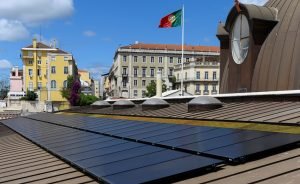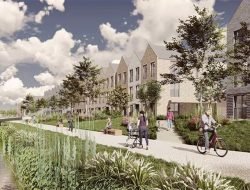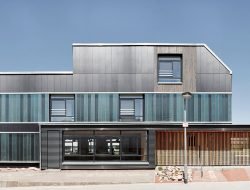As the only heritage building in Portugal to have undergone far-reaching energy improvement measures, this project marks an important milestone for the Sharing Cities programme, and a great success for Lisbon’s climate adaptation strategy.
Designed by the architect Domingos Parente da Silva and completed in 1880, Lisbon city hall is considered one of the most emblematic buildings in Portugal. Not so long ago, it was one of the 5 most energy-intensive public buildings in the city. In 2016, the Lisbon authorities therefore decided to undertake a complete energy rehabilitation of the building.
This renovation was carried out within the framework of the European programme Horizon 2020 Sharing Cities, which uses open-source solutions to improve sustainability in cities and the well-being of citizens. Sharing Cities is a €24 million initiative funded by the EU research and innovation programme Horizon 2020.
Improving performance by respecting the architecture
According to Sharing Cities, public buildings in the EU are, on average, 40% more energy intensive than residential ones. The Lisbon project aimed to demonstrate that it is possible to improve their energy performance, while preserving their original architecture and characteristics.
“Historic buildings are generally perceived as difficult to restore, but the energy renovation of Lisbon City Hall is a perfect example of what can be achieved,” says David Cunha, Senior Advisor for Information Technology and Digital Transformation in the city.

Lisbon Municipality solar
From the existing plans, a 3D model was created to establish the basic characteristics of the building (building materials, occupancy and use patterns, lighting systems, heating and cooling systems, etc.). Combined with simulation software, this 3D model made it possible to determine the most respectful renovation approach and solutions.
Steps to success
The interventions carried out include the replacement of the HVAC system (Heating, Ventilation, Air Conditioning) by a modern installation , the replacement of existing lamps with LEDs, as well as the installation of a photovoltaic system. The only intervention on the structure of the building was the restoration of the windows. The building now also benefits from a sustainable energy management system SEMS (Sustainable Energy Management System), developed by Sharing Cities.
The latest data collected as part of the monitoring of the building’s energy performance shows energy savings of 36%. Total grid electricity consumption has been reduced from 500 MW (in 2016) to less than 250 MW (in 2019).
“The significant energy savings achieved at Lisbon City Hall show the way forward for other cities facing similar sustainability challenges, especially in historic buildings,” commented Nathan Pierce, Director of the Sharing Cities Programme.
Tags: # City Hall, # historic buildings, Lisbon, Portugal, rénovation, Sharing Cities





































